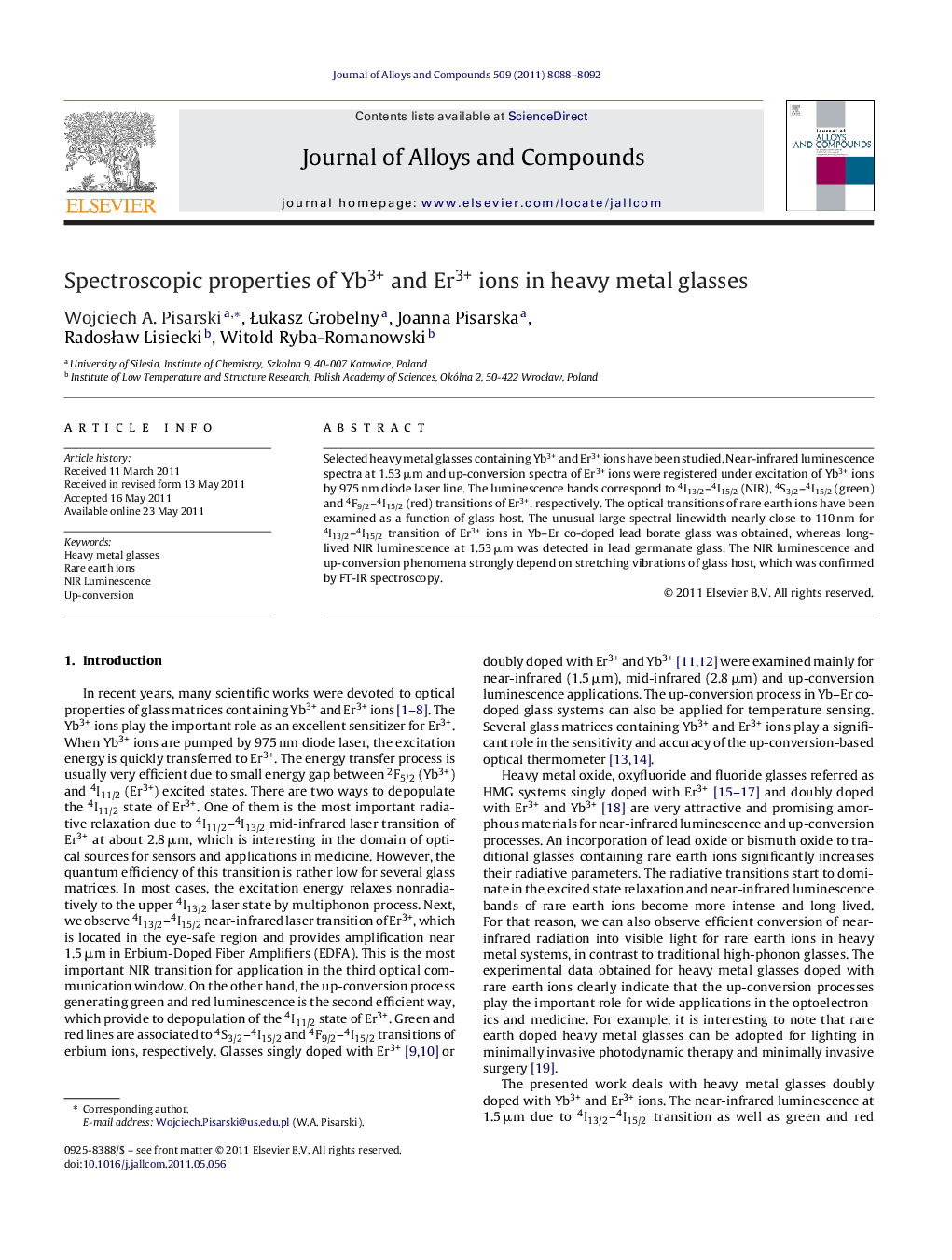| Article ID | Journal | Published Year | Pages | File Type |
|---|---|---|---|---|
| 1616938 | Journal of Alloys and Compounds | 2011 | 5 Pages |
Selected heavy metal glasses containing Yb3+ and Er3+ ions have been studied. Near-infrared luminescence spectra at 1.53 μm and up-conversion spectra of Er3+ ions were registered under excitation of Yb3+ ions by 975 nm diode laser line. The luminescence bands correspond to 4I13/2–4I15/2 (NIR), 4S3/2–4I15/2 (green) and 4F9/2–4I15/2 (red) transitions of Er3+, respectively. The optical transitions of rare earth ions have been examined as a function of glass host. The unusual large spectral linewidth nearly close to 110 nm for 4I13/2–4I15/2 transition of Er3+ ions in Yb–Er co-doped lead borate glass was obtained, whereas long-lived NIR luminescence at 1.53 μm was detected in lead germanate glass. The NIR luminescence and up-conversion phenomena strongly depend on stretching vibrations of glass host, which was confirmed by FT-IR spectroscopy.
► Heavy metal glasses doubly doped with Yb3+ and Er3+ were examined. ► NIR luminescence at about 1530 nm and green and red up-conversion spectra were detected. ► The unusual large spectral linewidth nearly close to 110 nm for 4I13/2–4I15/2 transition of Er3+ ions in Yb–Er co-doped lead borate glass was obtained. ► Long-lived NIR luminescence was detected in lead germanate glass. ► The NIR luminescence and up-conversion phenomena strongly depend on stretching vibrations of glass host.
